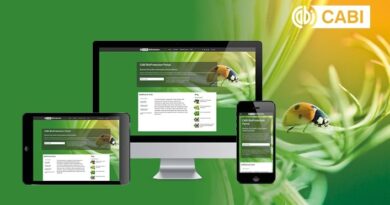Case Study: Risk Management and Yield Optimization
05 July 2021, Canada: About: Mark Keating and his family have been farming for more than 100 years, producing a variety of crops ranging from yellow peas, canola, and soybeans to hemp, oats, and barley. While many growers find it challenging to maintain one business, Mark Keating owns and operates three. In addition to farming their 7,200 acres, the Keatings maintain a separate seed plant known as Keating Seeds; and they own Bin 22, a specialty coffee shop dedicated to bringing high-quality espresso-based beverages to the local community.
Location: Russell, Manitoba; Canada
Farmers Edge Technologies: Satellite imagery, Smart VR (soil sampling and yield management)
Usage Case: Risk management and yield optimization
Duration: Ten years
Challenge:
When Mark Keating harvested his first crop almost 30 years ago, he used little in the way of soil sampling. He maintained a standard fertilization program based on the crop they were planting, which didn’t change much from year to year. Similar to many growers, Keating’s initial business challenge was simply to “do better.” His “do better” definition included everything from increasing yields, to generating higher protein levels in the Spring Wheat crop, to achieving long-term sustainability.
Keating was also looking to avoid what he described as a common challenge for farmers – the “big swing and miss.” With the capital-intensive nature of the industry and the vagaries of the weather, it’s hard to know exactly when to apply herbicides and fertilizer to achieve optimal results. As all growers know, inadvertent over- or under-fertilization can lead to a less-than-bountiful crop, with fewer bushels on which to spread your overhead, causing production costs to skyrocket.
Solution:
To minimize the risk of a “miss,” Keating started working with Farmers Edge upon the recommendation of a trusted colleague. The objective was to make more prescriptive and data-driven decisions on Keating’s field production. While the Keatings thought about performing the analyses themselves or even hiring another third party, their research on Farmers Edge led them to settle on this solution as the ideal combination of people, built-in expertise, and support. Today, the Keatings rely on the Farmers Edge soil testing regime, zone mapping, and fertility recommendations based on yield targets to maximize production.
“Farmers Edge was easy to deploy; they used their in-house team to set up and identify field variability, as well as build production zones based on this data.” Fields are sampled on a rotational basis using actual and virtual soil sampling techniques. 2019 marked the first crop where the Keating farm used the soil moisture sensors and predicted yields based on a variety of different factors, including crop growth, crop stage, and fertility.
“Early in that year, it looked like we were going to have an ugly crop,” stated Keating. “At the same time, we reviewed the yield calculations that the Farmers Edge platform was making; they seemed crazy high and just didn’t make sense, given what we were seeing as we travelled around and looked at the fields. I was convinced the technology was wrong.”
He concluded, “I was surprised and delighted that the predictions proved to be true — within 5% of the actual yields that year. And we had a similar experience in 2020 — again, the platform has proved to be quite remarkable in its accuracy.”
After a ten-year partnership, Keating views Farmers Edge as an investment rather than an expense. The soil sampling over time has acquired enough data on previous crops, yields, and environmental conditions that the Keatings can now be more predictive and confident in their decisions.
“The data has made us stronger and stronger every year,” stated Keating. And while he can’t put specific metrics on the time-savings, the fact that he’s been able to run three successful businesses with a small staff speaks to the level of trust he has in Farmers Edge.
While sustainability is a popular buzzword today, Keating believes that successful growers have always focused on sustainability.
“It’s what farmers do all the time and what we’ve always done,” he explained. “We use all the resources in the most responsible fashion, from available capital and the existing talent pool to the nutrients, pesticides, and soil on the land. The market doesn’t really allow for unsustainable usage — you’ll get wiped out.” Keating added, “And that’s how Farmers Edge fits in — it helps me utilize all of my resources in a more sustainable fashion.”
“Farmers Edge made it easy to deploy; they used their knowledge to set up and identify field variability, as well as build production zones based on this data…the platform has proved to be quite remarkable in its accuracy.”















